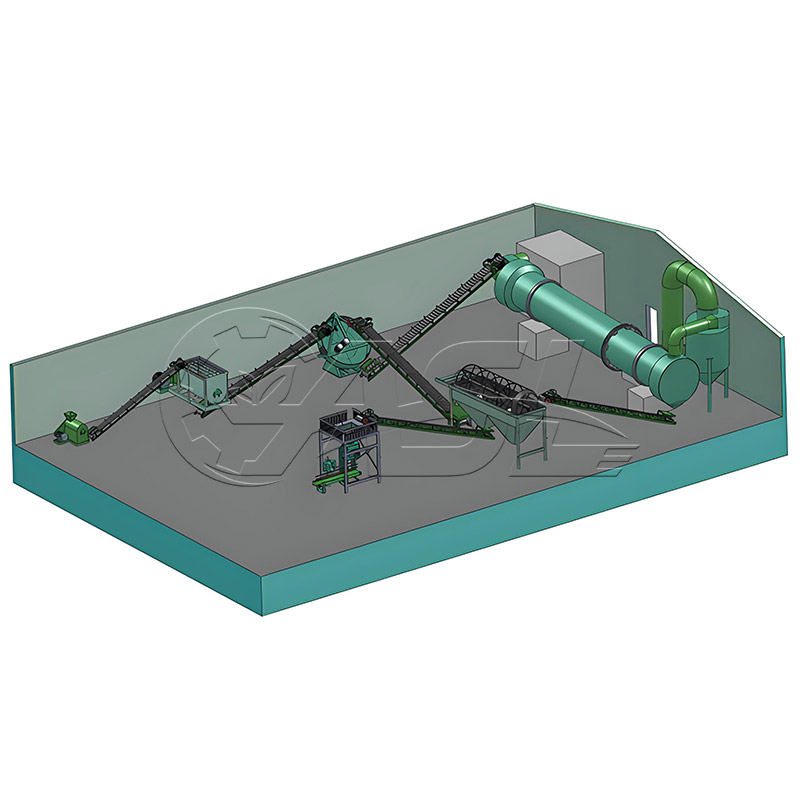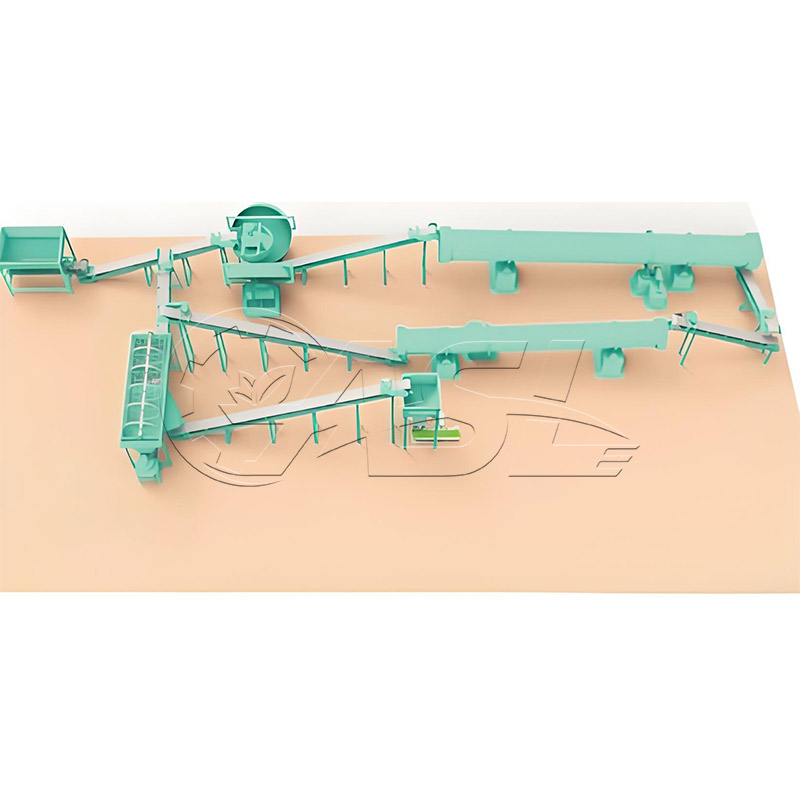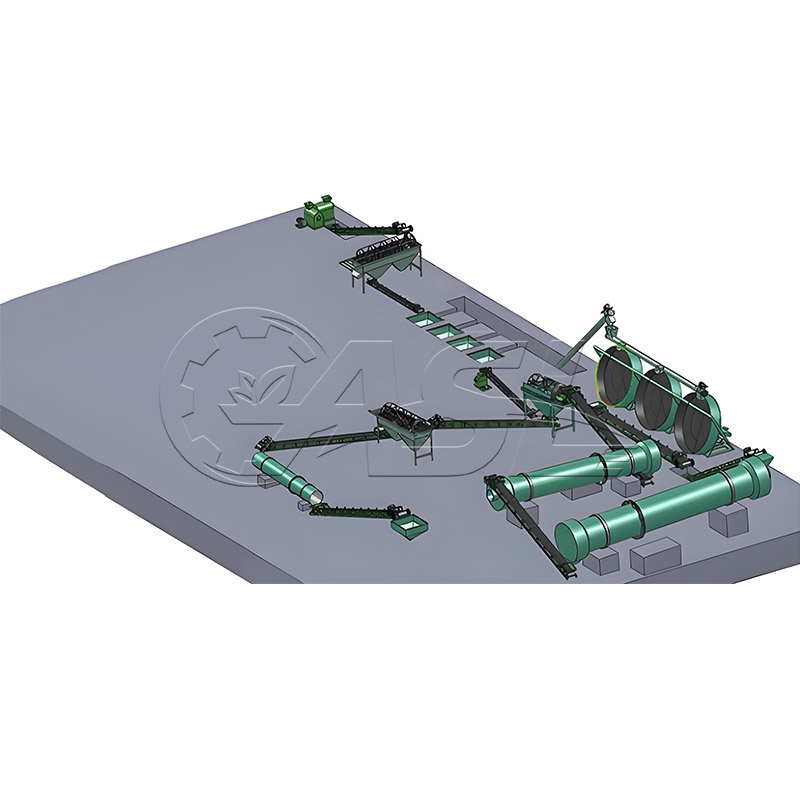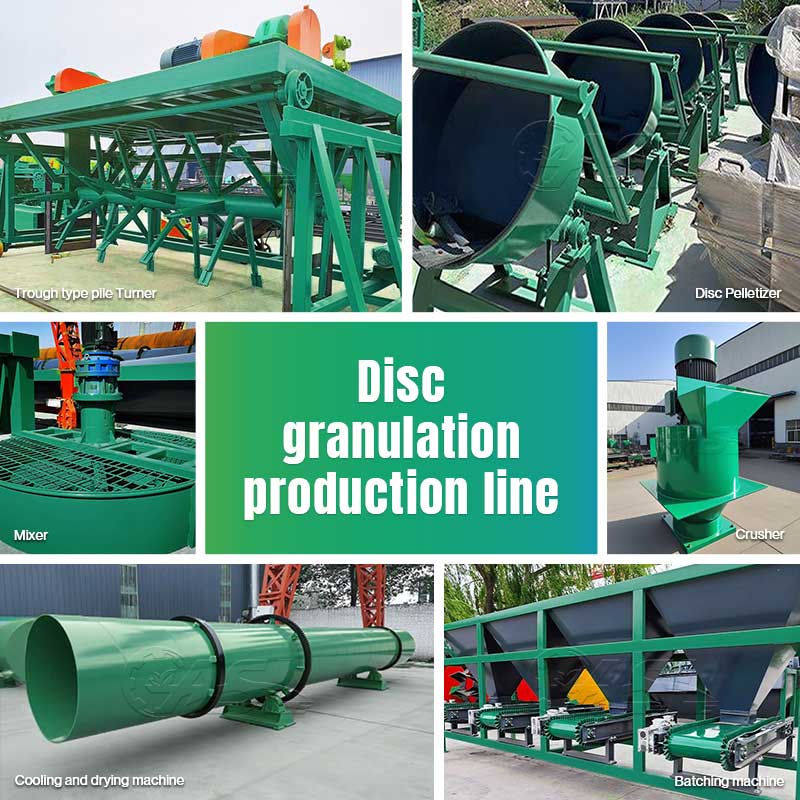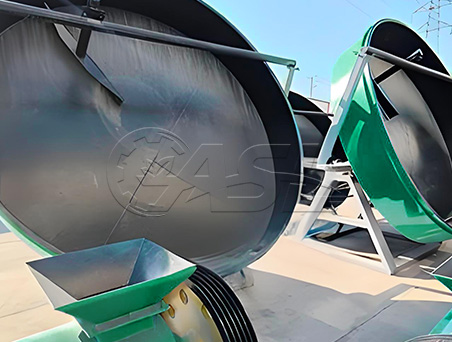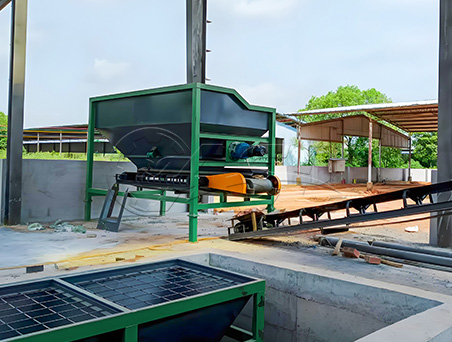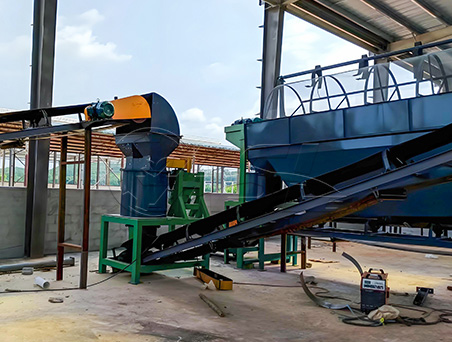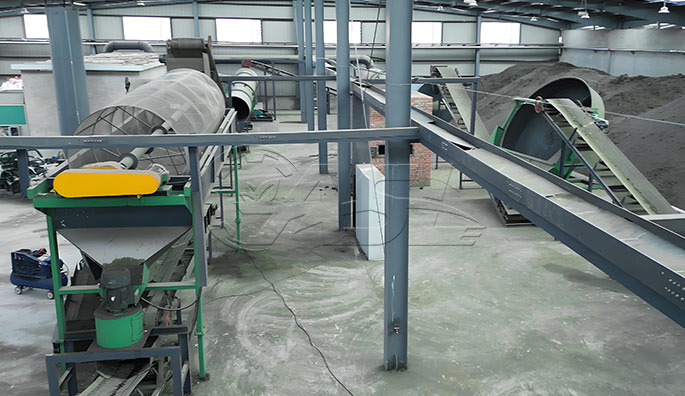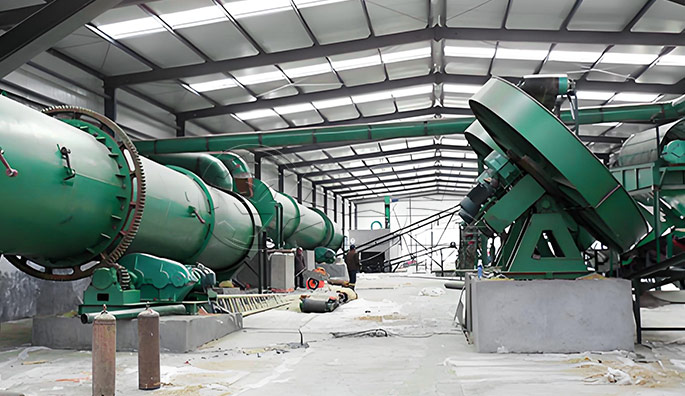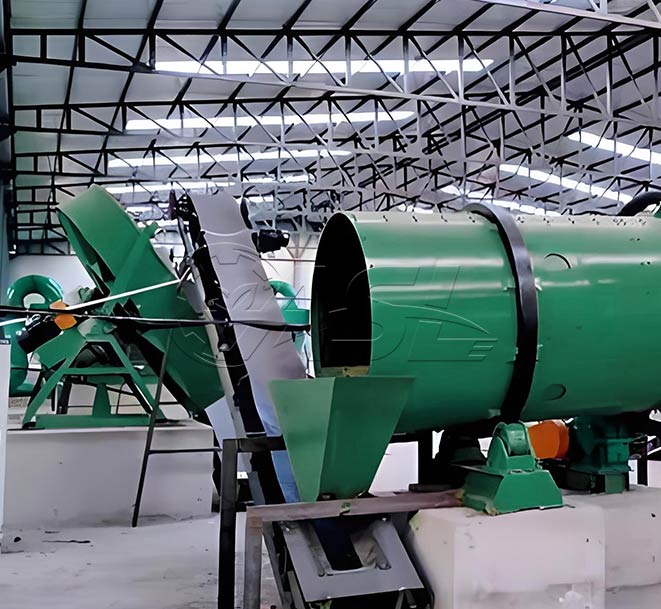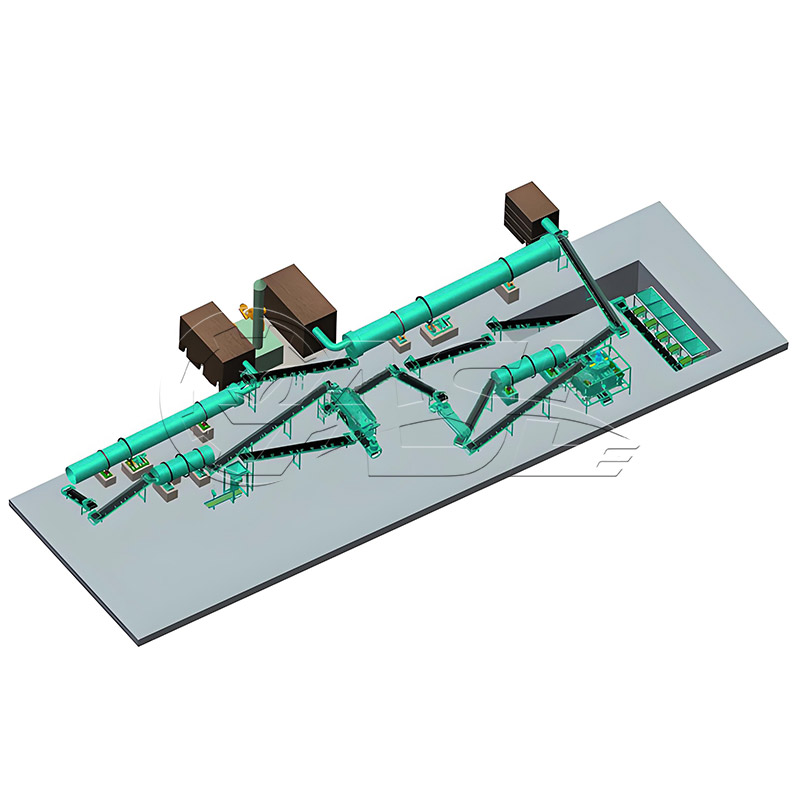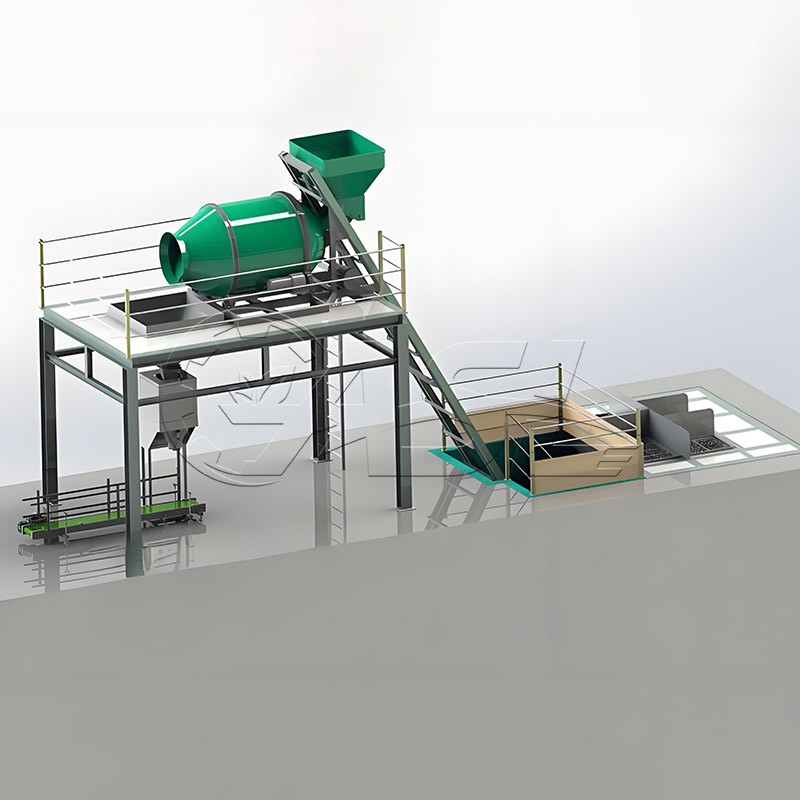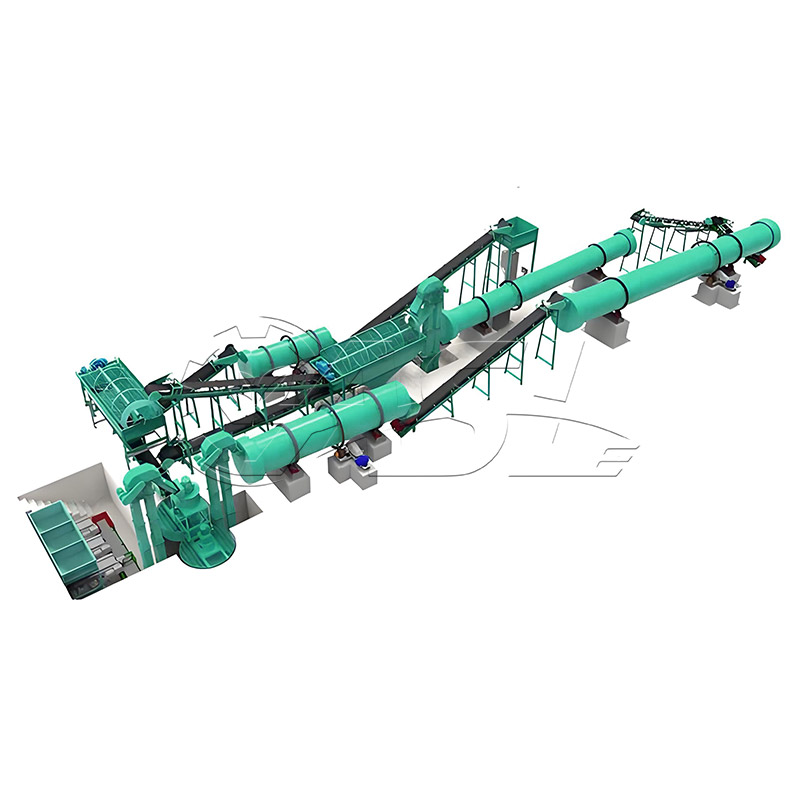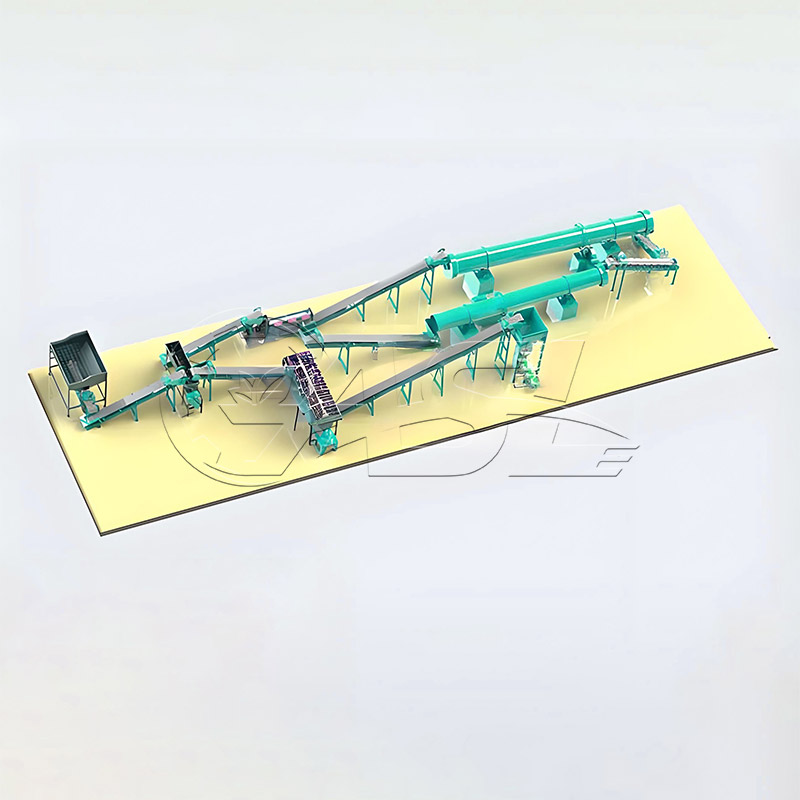What raw materials can a disc pelletizing line process? What are the raw material moisture requirements?
It can process organic and inorganic materials such as livestock and poultry manure (after fermentation), straw powder, humus, slag, and fly ash. The recommended raw material moisture level is typically 20%-35%. If the humidity is too high, the disc will stick, while if it is too low, pelletization will be difficult. Therefore, moisture adjustment is necessary.
What is the shape and size of the finished pellets produced by disc pelletizing? Can it meet different fertilization requirements?
The finished pellets are generally elliptical or nearly spherical. The particle size can be controlled by adjusting the disc speed, inclination angle, and scraper position, typically ranging from 3-10mm. Fine particles are suitable for seedlings and potted plants, medium particles are suitable for fruit, vegetable, and tea plantations, and coarse particles are suitable for field crops, making them suitable for a variety of applications.
How many workers are needed to operate a disc pelletizing line?
Are specialized skills required? A production line with an hourly output of 1-5 tons requires only 2-3 people, whose duties include feeding, inspecting the pelletizing process, and packaging the finished products. The equipment's operation is simple, and the manufacturer provides 1-2 days of on-site training. Once workers master basic startup and shutdown techniques and parameter adjustments (such as disc speed), they can begin work. No professional skills certification is required.
Do impurities in the raw materials (such as small stones and plastic fragments) affect the disc pelletizer? Do they require pretreatment?
Yes, stones can wear the liner and scraper, and plastic fragments can entangle the scraper, affecting pelletization. Pretreatment is necessary. We recommend using a vibrating screen and manual sorting (to remove plastic and fiber) to ensure a raw material purity of ≥95%.
What daily maintenance is required for a disc pelletizing line? What is the maintenance interval?
Daily maintenance requires cleaning the disc of residual material, inspecting the liner for wear, and lubricating the transmission components. Weekly maintenance (tightening bolts and checking scraper clearance) is performed, while monthly maintenance (cleaning the gearbox and calibrating the disc inclination) is performed. Lubricant should be changed quarterly.
